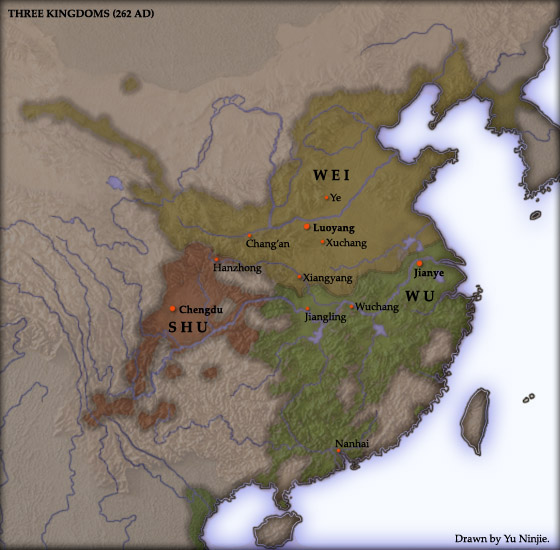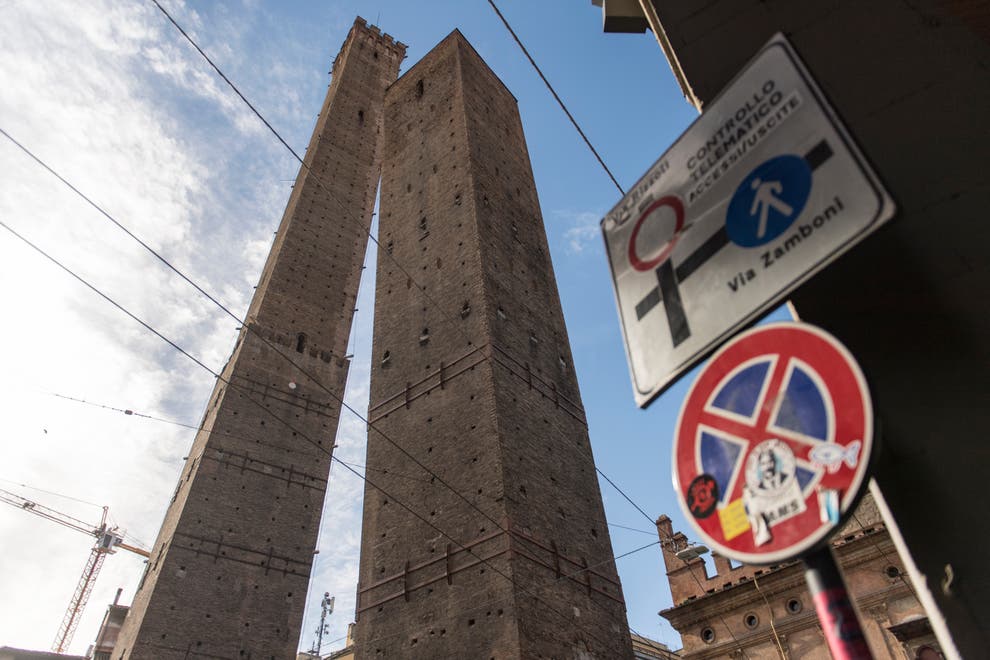One of France's most impressive monuments turns 1,000
The historic Mont Saint-Michel Abbey, located in Normandy, north France, celebrates 1,000 years since construction first began.
https://edition.cnn.com/videos/travel/2023/06/07/mont-saint-michel-france-1000-years-cprog-lon-orig-cw.cnn
The Middle Ages (500 – 1499 AD)
-
weatheriscool
- Posts: 13342
- Joined: Sun May 16, 2021 6:16 pm
Re: The Middle Ages (500 – 1499 AD)
Maya civilisation: Archaeologists find ancient city in jungle
https://www.bbc.co.uk/news/world-latin-america-65974439Pottery unearthed at the site appears to indicate it was inhabited between 600 and 800 AD, a period known as Late Classic.
...
On that elevated terrain, they found several large buildings, including a number of pyramid-shaped ones measuring more than 15m.
...
The cylindrical stone columns which prompted the researchers to name the site Ocomtún were probably entrances to rooms in the upper parts of the buildings, he added.
According to Mr Sprajc the site probably underwent considerable changes between 800 and 1000 AD before falling victim to the collapse of the Lowland Maya civilisation in the 10th Century.
Re: The Middle Ages (500 – 1499 AD)
Climate Change Fostered Rise and Fall of the Tibetan Empire During 600-800 A.D.
July 17, 2023
Introduction:
For a presentation of the study on climate change and the Tibetan empire of the Middle Ages: https://www.sciencedirect.com/science/ ... ia%3Dihub
July 17, 2023
Introduction:
Read more of the Eurekalert article here: https://www.eurekalert.org/news-releases/995737(Eurekalert) This study is led by Dr. Juzhi Hou, Dr. Fahu Chen, and Dr. Kejia Ji (Group of Alpine Paleoecology and Human Adaptation (ALPHA), State Key Laboratory of Tibetan Plateau Earth System, Resources and Environment (TPESRE), Institute of Tibetan Plateau Research, Chinese Academy of Sciences). The research team obtained a high-resolution climate record of the past 2000 years using the varved sediments of Lake JiangCo on the central Tibetan Plateau. The warm and humid climate during the 7th-9th centuries AD and the subsequent cold and aridification are consistent with the rise and fall of the Tibetan Empire. Climate change is one of the possible reasons for the rise and fall of the Tibetan Empire.
During the preliminary field investigation, the researchers found that the varved sediment in JiangCo, a lake on the central Tibetan Plateau, was well-preserved. Through earlier varve counting and other radiometric dating methods, the time range of a gravity core of up to 1 meter covering the past 2000 years was determined. Subsequently, high-resolution XRF elements scanning and carbonate carbon/oxygen isotope analysis were performed on the sediment, and the temperature and precipitation records for the past 2000 years were reconstructed using biomarkers such as alkenones. The results showed that the 7th-9th centuries AD was an unusually warm and humid period. The researchers compared this period with historical literatures and found that it coincided with the only unified local regime, the Tibetan Empire, which existed on the Tibetan Plateau at that time. The changes in warm and humid climate and cold and dry climate were highly correlated with the foreign policy changes of the Tibetan Empire. Combined with the ecological niche model, the researchers simulated the area of highland barley cultivation during the warm and humid period of the 7th-9th centuries AD and the subsequent cold and dry period, which differed by about 10.88 million hectares.
On the ecologically fragile environment of the Tibetan Plateau, climate change is one of the factors that constrains human activities. This latest research results show that warm and humid climates promote the development of agriculture and animal husbandry on the plateau, while cold and arid conditions have negative effects on agriculture and animal husbandry.
For a presentation of the study on climate change and the Tibetan empire of the Middle Ages: https://www.sciencedirect.com/science/ ... ia%3Dihub
Don't mourn, organize.
-Joe Hill
-Joe Hill
Re: The Middle Ages (500 – 1499 AD)
Research Shows that Income Inequalities within the Aztec Empire Eased the Way of the Conquistadores
September 18, 2023
Introduction:
September 18, 2023
Introduction:
Additional extract:(Eurekalert) Spanish conquerors did not themselves bring inequality to the Aztec lands they invaded, they merely built on the socio-economic structure that was already in place, adapting it as it suited their plans. This is the subject of an article by Guido Alfani of Bocconi University, Milan, and Alfonso Carballo of NEOMA Business School in France. Their “Income and inequality in the Aztec Empire on the eve of the Spanish conquest”, has just been published on Nature Human Behaviour.
Income distribution in present-day Mexico is, as in other Latin American countries, rather unequal. Alfani and Carballo started out from this well-known fact and began to investigate whether the situation was any different before Spanish rule replaced the so-called Aztec Empire. This polity originated from an alliance of three city-states which over time came to rule over a range of provinces which were required to pay tributes, including in blood. Its agriculture was fairly advanced in terms of yield, but extremely labor-intensive as the wheel was unknown and no animals were employed.
The primary social distinctions in the Aztec Empire were between the nobility, the commoners and the slaves. The elite dominated the commoners by holding exclusive control over resources. The taxes established for each province were variable, depending on how the province had become part of the Aztec Empire. Those provinces that had militarily resisted the Aztec Empire were subjected to higher imperial tax rates once conquered.
Read more here: https://www.eurekalert.org/news-releases/1001807The highly centralized tax collection was so resented by vast regions of the Empire that their populations, whose living standards were only slightly above subsistence, actually took arms on the Spaniards’ side.
“The rapacious institutions characterizing the Aztec Empire paved the ground for subsequent colonial exploitation,” says Guido Alfani. “As we argue, the relatively high levels of income inequality that came to characterize Latin America could not be considered to have been the sole consequence of the initial conditions imposed by the Spaniards. Nor could they simply come from the predatory attitudes and institutions of the colonial elite. Instead, colonization further exacerbated the highly extractive conditions that had come into being before the conquest and ensured their continuation for centuries thereafter.”
Don't mourn, organize.
-Joe Hill
-Joe Hill
Re: The Middle Ages (500 – 1499 AD)
Legendary Ancient Temple Believed to Be Lost Has Been Found in Mexico
Dr. Russel Moul
October 6, 2023
Introduction:
Dr. Russel Moul
October 6, 2023
Introduction:
Read more here: https://www.iflscience.com/legendary-a ... o-71008(IFL Science) Archaeologists have found the remains of an ancient Mexican temple that was thought to be little more than a legend.
Within the city of Atlixco in central Mexico, there has long been a rumor of a lost temple, or teocalli, that was built centuries before the Spanish arrived in the early 16th century. According to the local people, the Atlixquenses, the temple was originally constructed on top of the San Miguel Hill where there is currently a Catholic chapel dedicated to the archangel Michael.
Despite these rumors, no archaeological evidence for this legendary temple had ever been found. However, recent work carried out by the Ministry of Culture of the Government of Mexico through the National Institute of Anthropology and History (INAH) has discovered vestiges that confirm its existence.
The first evidence that led to this discovery appeared during efforts to renew the chapel’s lighting and to reinforce the paths leading up the hill. A team of researchers, coordinated by INAH archaeologists Miguel Medina Jaen and Carlos Cedillo Ortego, along with Elvia Cristina Sánchez de la Barquera, found artifacts – stone tools, ornaments, and clay vessels – that were over 1,000 years old. These objects were created by the Mesoamerican Nahua, who lived in this region centuries before Europeans arrived.
The team carried out survey work inside and around the chapel’s atrium and found the remains of stone walls and floors that had belonged to an ancient temple that pre-dates the current structure. These remnants are buried around 90 centimeters (35 inches) below the foundations of the existing chapel.
Don't mourn, organize.
-Joe Hill
-Joe Hill
Re: The Middle Ages (500 – 1499 AD)
73 Pre-Incan Mummies Unearthed from Wari Empire in Peru
by J. Chyla
November 27, 2023
Introduction:
by J. Chyla
November 27, 2023
Introduction:
Read more here: https://archeowiesci.pl/en/seventy-thr ... hacamac/(Archeowiesci.Pl) Seventy-three intact burials in burial bundles, some with carved masks, have just been discovered at Pachacámac. The site of the find is an extensive complex of cemeteries from different periods at the foot of the Painted Temple. Nearby, wooden staff with images of dignitaries of the Wari Empire were also discovered.
The burials date from the second half of the Middle Horizon, that is, the time of the Wari Empire. The burial bundles were initially deposited individually and later also in groups. The state of preservation for most of them is spectacular.
73 intact burials below the Incan wall
These seventy-three intact burials in funerary bundles (fardos) date from the expansion period of the prehistoric Wari Empire, i.e. from around 800–1100 AD. Particularly noteworthy among them are the burials of individuals of both sexes wearing masks made of carved wood and ceramics, on so-called “false heads”. The discovery was made by a team of archaeologists from the Pontifical Catholic University of Peru, led by Professor Krzysztof Makowski at Pachacámac, south of Lima (Peru).
The site of Pachacámac is a famous Incan-period temple and oracle of a deity whose name, Pacha Kamaq (Pachakamak, in Quechua), means ‘one who gives life to the earth’. The exact site of the find is an extensive complex of cemeteries from different periods, at the foot of the Painted Temple. The complex of cemeteries was already discovered at the end of the 19th century by Max Uhle, considered a pioneer of scientific archaeology in the Andes. It was Uhle who attributed the worship of the temple to a deity named Pacha Kamaq. Uhle did not publish his findings, apart from general descriptions of the site plan, architecture, excavations and stratigraphy. The cemetery suffered systematic destruction both before and after Uhle’s fieldwork. The first was by the campaign to eradicate pagan beliefs carried out during colonial times (extirpación de idolatrías). Then afterwards, unfortunately, by grave robbers. It can be assumed that only a small percentage of the graves he excavated were well preserved. Hence the uniqueness of the current discovery.
Don't mourn, organize.
-Joe Hill
-Joe Hill
- Time_Traveller
- Posts: 2184
- Joined: Sun May 16, 2021 4:49 pm
- Location: San Francisco, USA, June 7th 1929 C.E
Re: The Middle Ages (500 – 1499 AD)
Leaning tower in Italy sealed off over fears it could collapse into nearby buildings
https://www.independent.co.uk/news/worl ... 57268.html2 hours ago
A 900-year-old leaning tower in the Italian city of Bologna has been sealed off over fears it will collapse into nearby buildings.
The 47m tall Garisenda Tower tilts at a four-degree angle and is likely to topple over due to disintegrating stonework and cracks in the brickwork, authorities said.
The city announced it would set up bright red 2.6m thick barriers around the base of the tower to contain any falling debris.
“A new report by experts states the tower is at great risk of falling, so we need to be ready for every eventuality,” a city spokesperson said.
The council has now launched what it calls a civil protection plan to preserve the 12th century tower and said the work now being started “represents the first phase of making it safe”.
"We all have our time machines, don't we. Those that take us back are memories...And those that carry us forward, are dreams."
-H.G Wells.
-H.G Wells.
- Time_Traveller
- Posts: 2184
- Joined: Sun May 16, 2021 4:49 pm
- Location: San Francisco, USA, June 7th 1929 C.E
Re: The Middle Ages (500 – 1499 AD)
Medieval moat of 'high significance' excavated near Tewkesbury
https://www.bbc.co.uk/news/uk-england-g ... e-684888997 hours ago
Archaeologists made the discovery while exploring the site of Cowfield Farm, believed to date from the 12th or 13th centuries.
A newer brick farmhouse was damaged by fire in 2004, which enabled the team to start delving into its forgotten past.
"It's painstaking work picking apart all the deposits and coming up with a story about the site," said Jon Hart, from Cotswold Archaeology.
The excavation of the moat has provided archaeologists with an insight into the long-forgotten lives of medieval Gloucestershire farmers
Symbolism
The Cowfield farmers were on the middling rung of peasant society; legally free and holding land as tenants of Tewkesbury Abbey, two miles away.
"We all have our time machines, don't we. Those that take us back are memories...And those that carry us forward, are dreams."
-H.G Wells.
-H.G Wells.


